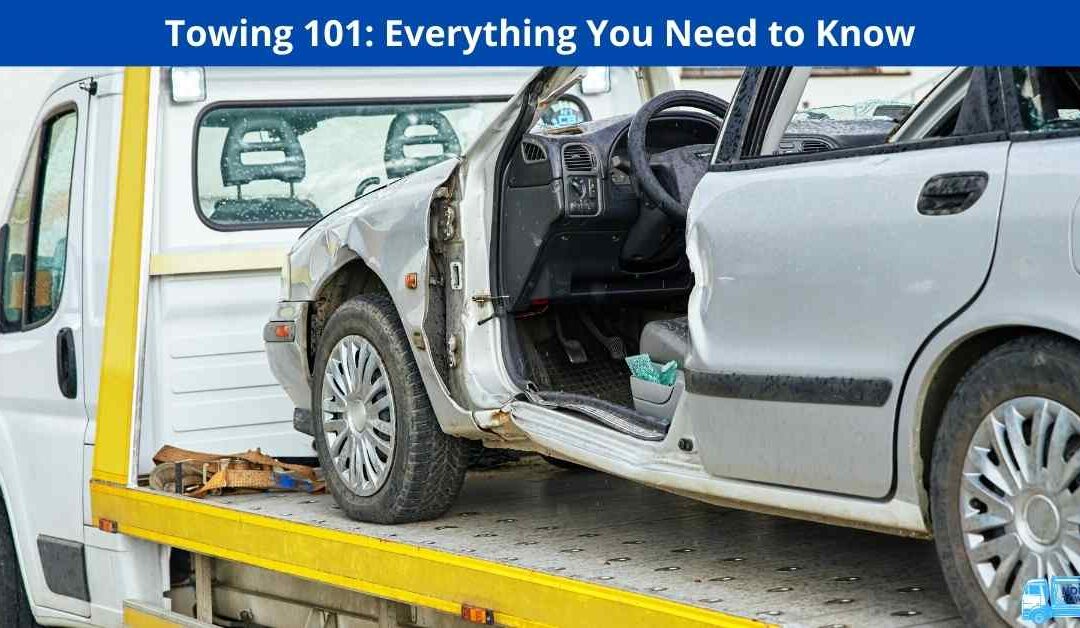Towing—a skill that can come in handy whether you’re transporting a camper, helping a friend move, or rescuing a stranded vehicle. Yet, it’s not as simple as hitching a trailer and hitting the road. Towing involves technicalities, safety measures, and considerations that every driver should be aware of before embarking on a towing journey. Here’s a comprehensive guide covering everything you need to know about towing:
- Understanding Towing Capacity
Every vehicle has a specified towing capacity. Exceeding this limit can strain your vehicle’s engine, transmission, and brakes. Check your vehicle’s manual or consult the manufacturer’s guidelines to determine its towing capacity.
- Choosing the Right Equipment
Invest in quality towing equipment suited for your needs. This includes the hitch, safety chains, trailer lights, and brake controllers. Regularly inspect these components for wear and tear to ensure they’re in top condition.
- Balancing the Load
Properly distribute weight on the trailer to prevent swaying or fishtailing while driving. Around 60% of the weight should be in the front half of the trailer to maintain stability.
- Safety Precautions Before Towing
Perform a thorough safety check before hitting the road. Ensure tire pressure is adequate, all lights are functioning correctly, and the hitch is securely attached. Also, test the trailer brakes if equipped.
- Driving and Handling While Towing
Towing alters your vehicle’s handling dynamics. Drive at moderate speeds, maintain a greater following distance, and anticipate braking earlier than usual. Avoid sudden maneuvers, especially when changing lanes or making turns.
- Maneuvering and Backing Up
Practicing maneuvering and backing up with a trailer is essential. Find an empty parking lot to practice controlling the trailer’s movements, steering, and reversing.
- Weather and Road Conditions
Adverse weather can significantly impact towing safety. Adjust your driving according to weather conditions and avoid towing in severe weather, if possible. Be cautious on wet or slippery roads.
- Planning Your Route
Select routes that accommodate towing, with wide lanes and ample turning space. Avoid narrow or winding roads, especially if you’re not confident in maneuvering the trailer in such conditions.
- Taking Breaks and Staying Alert
Towing demands more concentration and can be more tiring than regular driving. Take regular breaks to rest and ensure you’re alert and refreshed behind the wheel.
- Patience and Courtesy
Towing might slow down your journey, and other drivers might not understand the challenges you face. Be patient, use turn signals well in advance, and allow other drivers to pass when safe.
Conclusion
Towing, when done correctly, can be a safe and efficient way to transport goods or vehicles. However, it requires knowledge, preparation, and adherence to safety guidelines. By understanding your vehicle’s capabilities, investing in quality equipment, practicing safe driving habits, and staying mindful of road conditions, you can navigate towing with confidence. Remember, safety always comes first when towing, ensuring a smooth and secure journey for both you and others on the road.
If you are in Northcote, Victoria 3070, and looking for an emergency tow truck service or roadside assistance Melbourne service, this is the best way to visit us.
Northern Tow Trucks
620 Canning St
Carlton North VIC 3054
(03) 7064 2500

